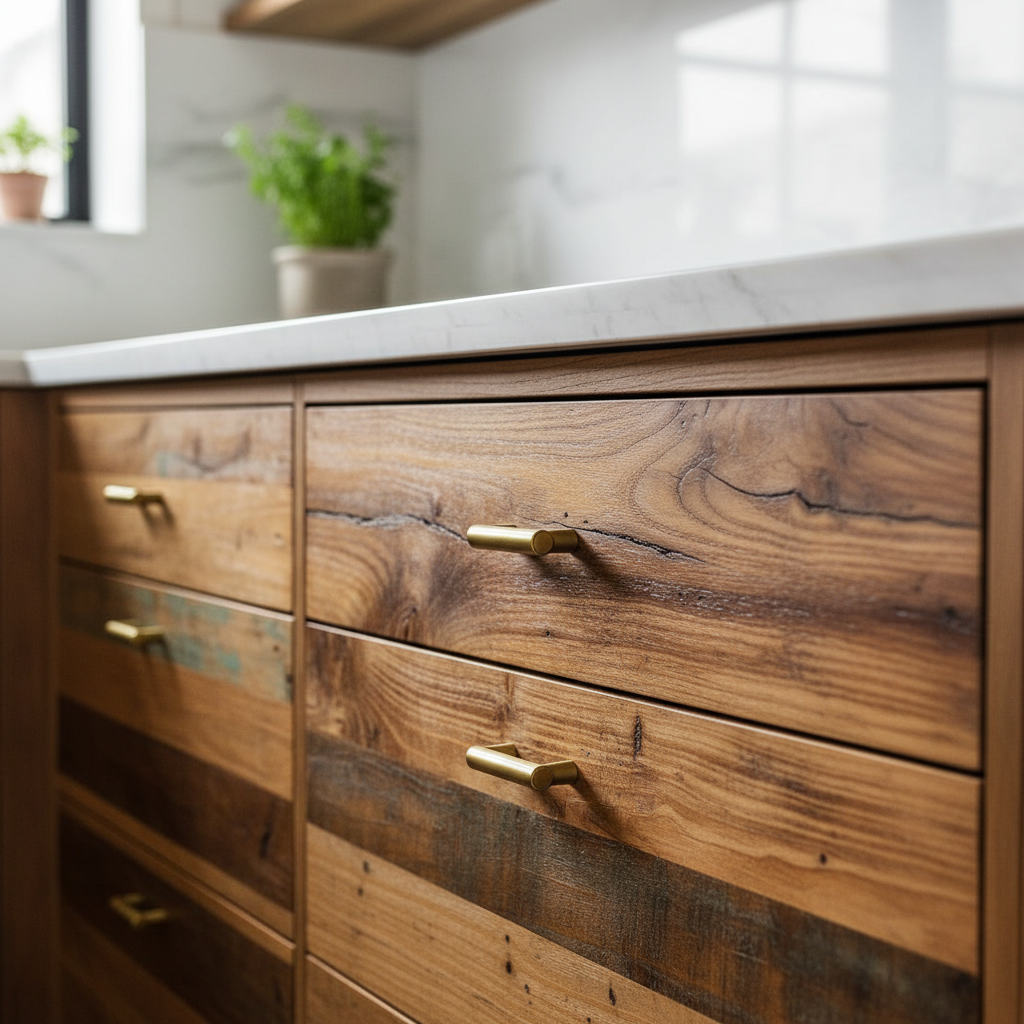Designing Your Sustainable Dream Kitchen
Embarking on a kitchen renovation in Toronto or Hamilton? Prioritizing eco-friendly choices doesn’t mean sacrificing style or functionality. In fact, sustainable materials and energy-efficient appliances can enhance both the beauty and efficiency of your new space. This guide explores how to create a kitchen that’s kind to the planet and your wallet.
Consider the lifecycle of materials. Opt for sustainably sourced wood for cabinets, countertops made from recycled materials, or bamboo, known for its rapid regrowth. These choices reduce the environmental impact associated with manufacturing and transportation.
Sustainable Cabinets: The Heart of Your Eco-Friendly Kitchen
Cabinets form the backbone of any kitchen, so choosing sustainable options is crucial. Look for cabinets made from reclaimed wood, rapidly renewable bamboo, or sustainably harvested hardwoods certified by organizations like the Forest Stewardship Council (FSC). Consider the paint or finish – opting for low-VOC (volatile organic compound) paints minimizes harmful emissions during and after installation. Remember, durability is key; well-made cabinets will last longer, reducing the need for replacements and minimizing waste.
When selecting cabinet hardware, consider recycled metals or materials with minimal environmental impact. Explore options made from post-consumer recycled content to further reduce your carbon footprint.
Energy-Efficient Appliances: Saving Money and the Planet
Upgrading to energy-efficient appliances is a significant step towards a greener kitchen. Look for the Energy Star label, which indicates that the appliance meets strict energy-efficiency guidelines. Consider features like smart power management, which optimizes energy consumption based on usage patterns. Refrigerators, dishwashers, and ovens are significant energy consumers; investing in high-efficiency models will yield substantial savings over time. Beyond the Energy Star rating, research specific models for their water and energy usage to make informed decisions.
Don’t forget about smaller appliances! Energy-efficient microwaves, toasters, and coffee makers all contribute to a more sustainable kitchen. Choosing appliances with longer warranties also reduces the likelihood of premature replacement and associated waste.
Eco-Friendly Countertops and Backsplashes: Style and Sustainability
Countertops and backsplashes are prominent features in any kitchen. Explore sustainable options like recycled glass, concrete, or butcher block countertops. These materials offer unique aesthetics while minimizing environmental impact. For backsplashes, consider recycled glass tiles, natural stone with minimal processing, or even a durable, eco-friendly paint. Remember to consider the durability and maintenance requirements of each material to ensure longevity and minimize future replacements.
When choosing materials, research their sourcing and manufacturing processes. Look for certifications and transparency regarding environmental impact. Consider the embodied carbon of each material, which refers to the greenhouse gas emissions associated with its production and transportation.
Low-VOC Paint and Finishes: A Breath of Fresh Air
Volatile organic compounds (VOCs) are released into the air from many paints and finishes. Opting for low-VOC or zero-VOC paints significantly reduces indoor air pollution, creating a healthier environment for your family. These paints are available in a wide range of colors and finishes, so you don’t have to compromise on style. When selecting paints, look for certifications and labels that indicate low-VOC content. Proper ventilation during and after painting is crucial, regardless of the paint type.
Beyond paint, consider the finishes used on cabinets and other surfaces. Look for options that are made with sustainable materials and have low or no VOC emissions. These small choices can significantly impact the overall environmental footprint of your kitchen renovation.
Lighting and Fixtures: Energy Efficiency and Design
Efficient lighting significantly reduces energy consumption. Switch to LED lighting throughout your kitchen. LEDs use significantly less energy than incandescent or fluorescent bulbs, resulting in lower electricity bills and a smaller carbon footprint. Consider installing dimmer switches to further control energy usage and create different moods in your kitchen. Natural light is also a valuable asset; maximize it by using sheer curtains or blinds instead of heavy drapes.
For fixtures, choose faucets and sinks made from recycled materials or with minimal environmental impact. Look for water-efficient faucets and appliances to conserve water, a precious resource. These choices contribute to a more sustainable and cost-effective kitchen.
Transforming your kitchen into an eco-friendly haven is achievable with careful planning and the right choices. By prioritizing sustainable materials, energy-efficient appliances, and low-VOC paints, you’ll create a space that’s both beautiful and environmentally responsible. Contact a reputable contractor in Toronto or Hamilton specializing in sustainable renovations to begin your green kitchen journey today!




